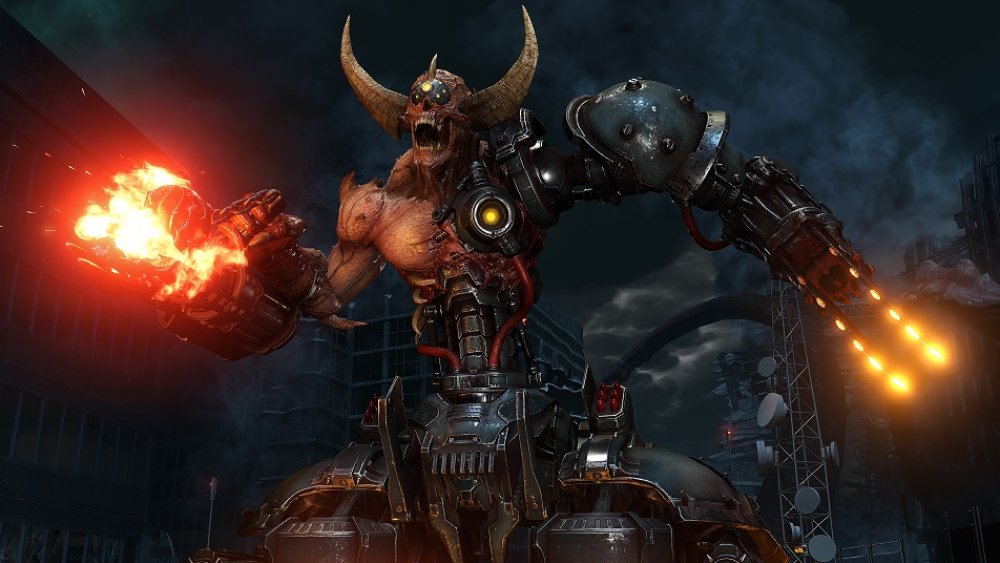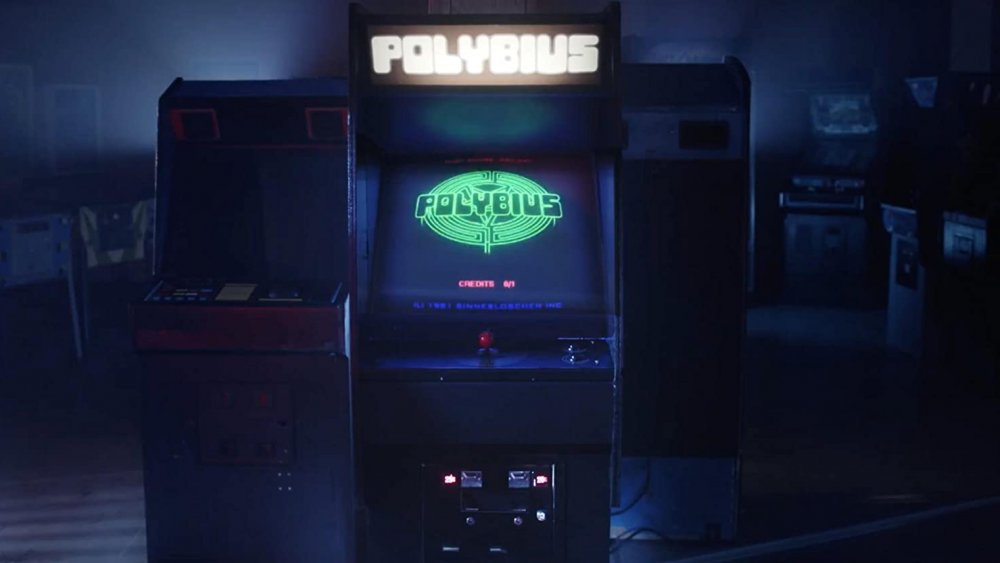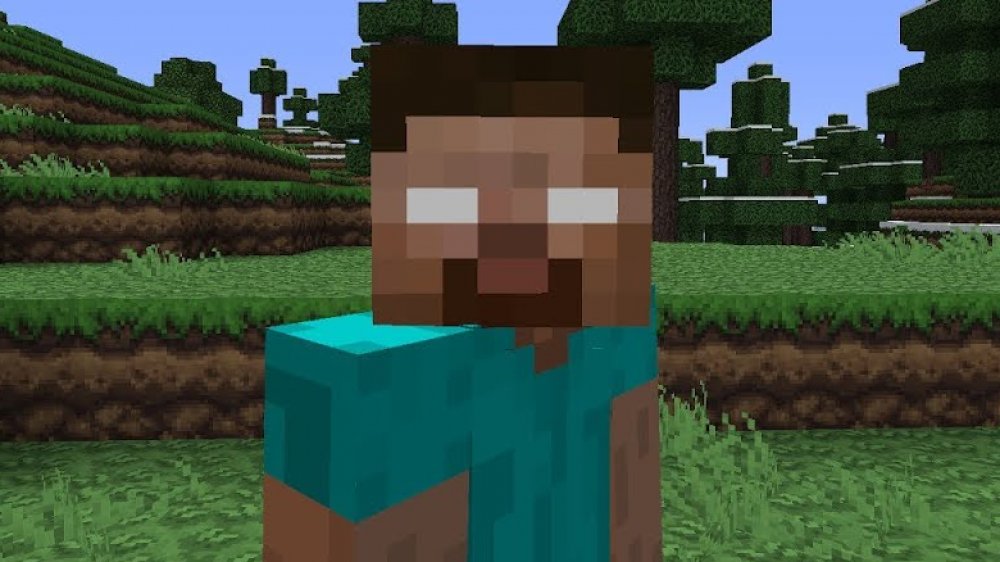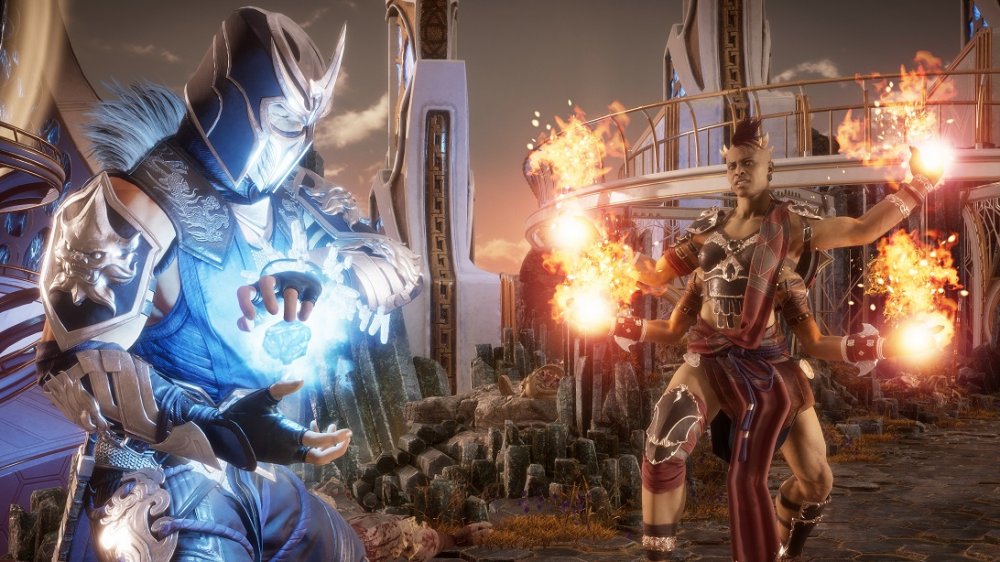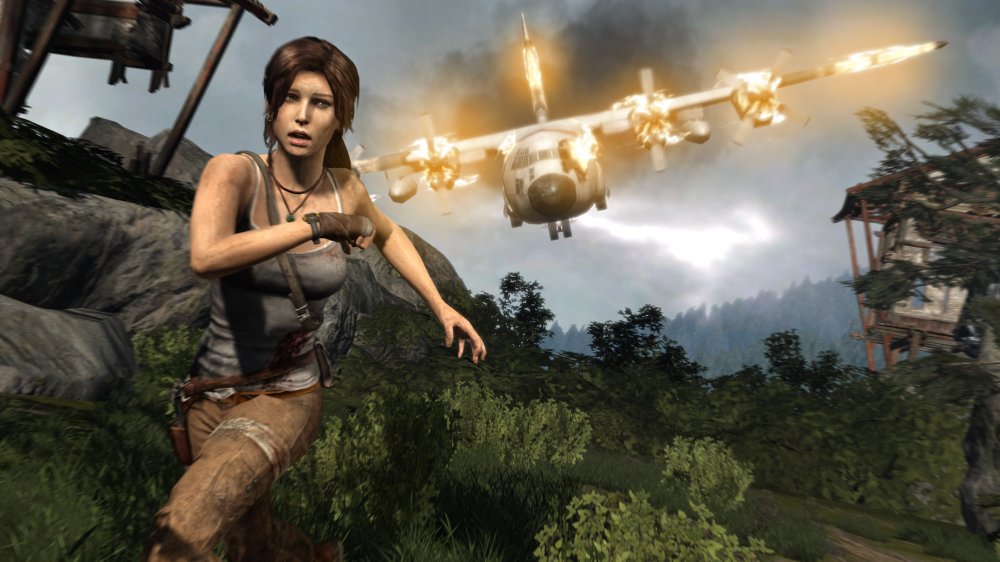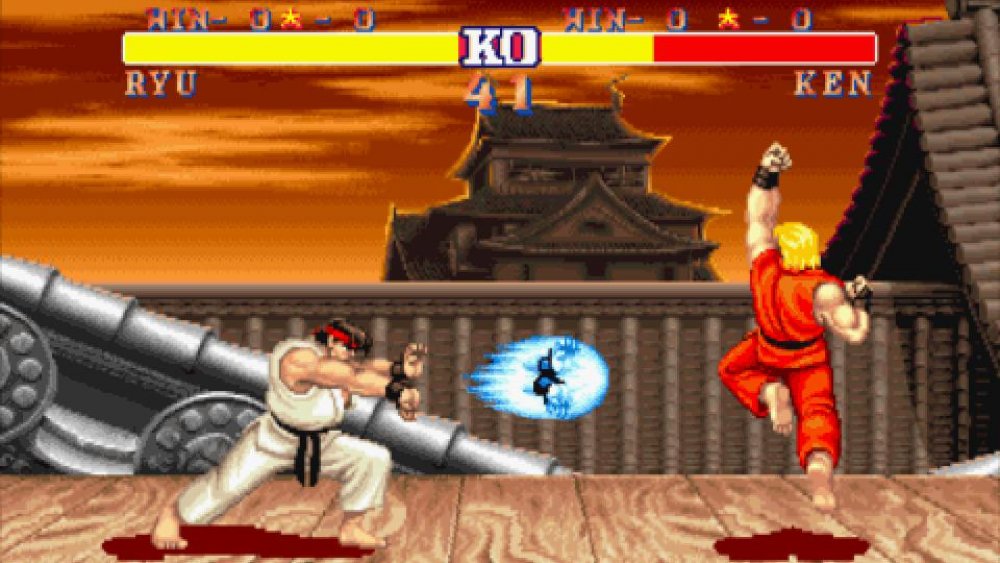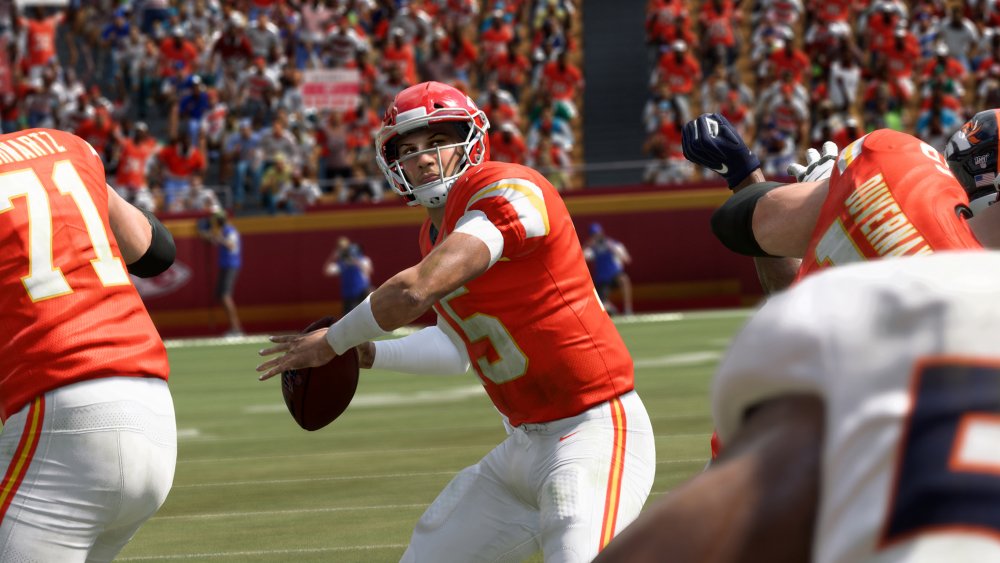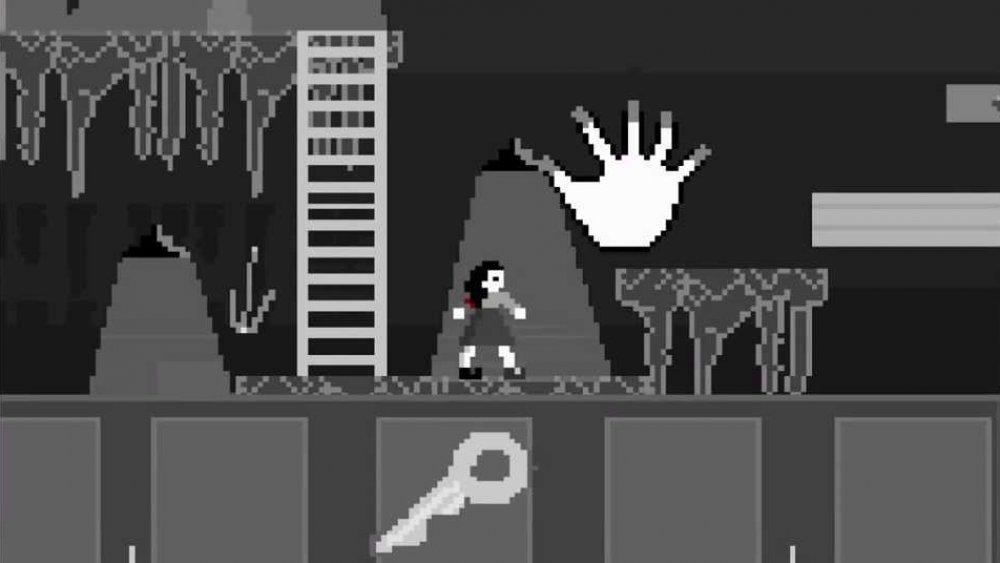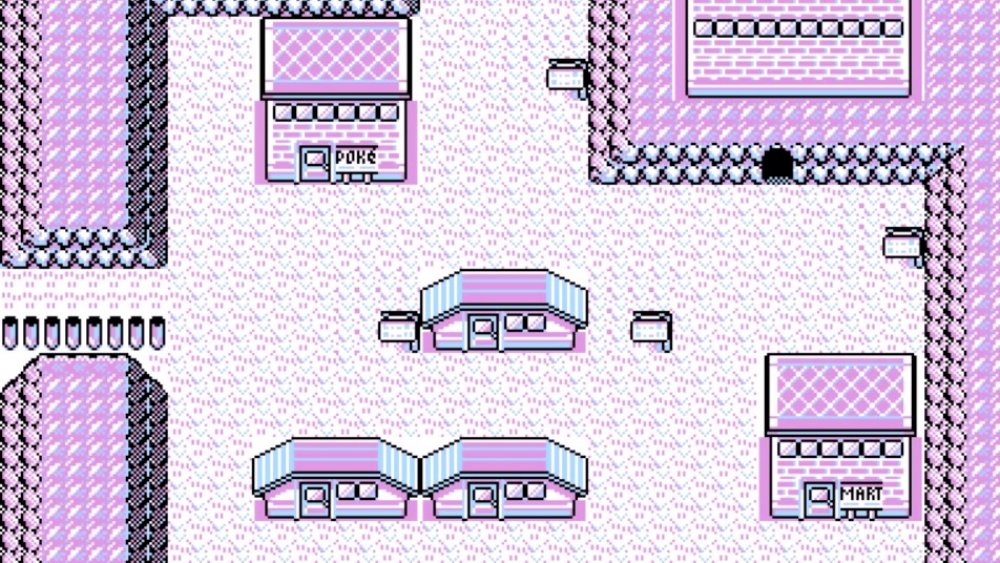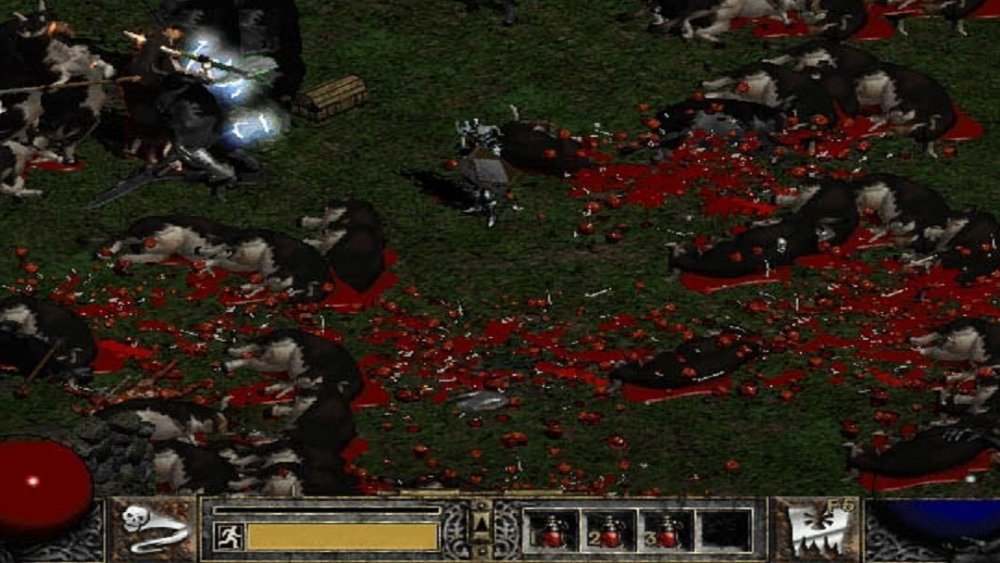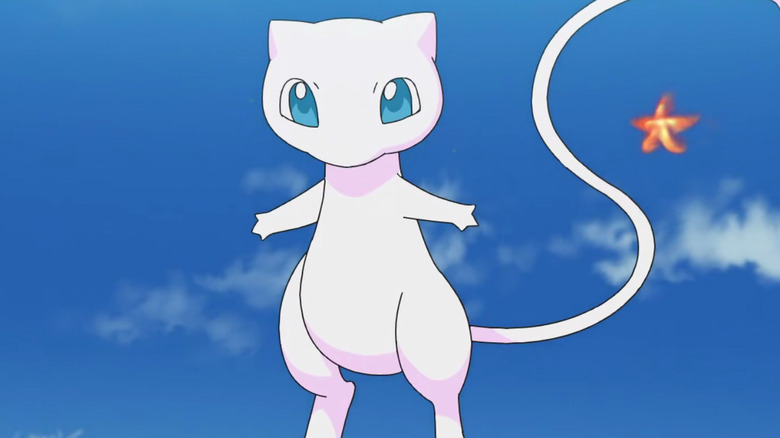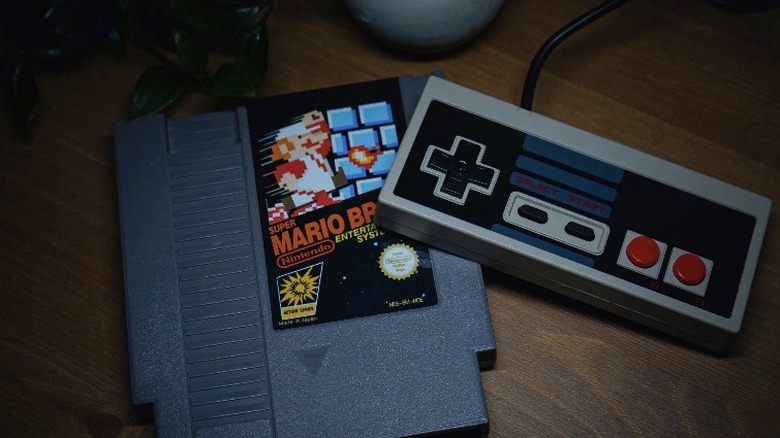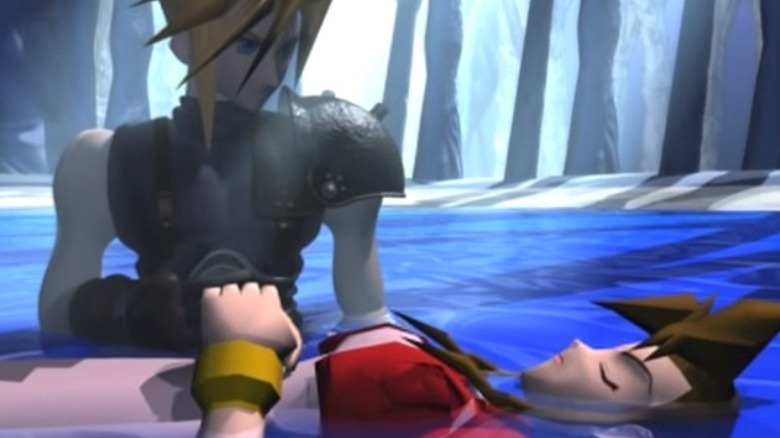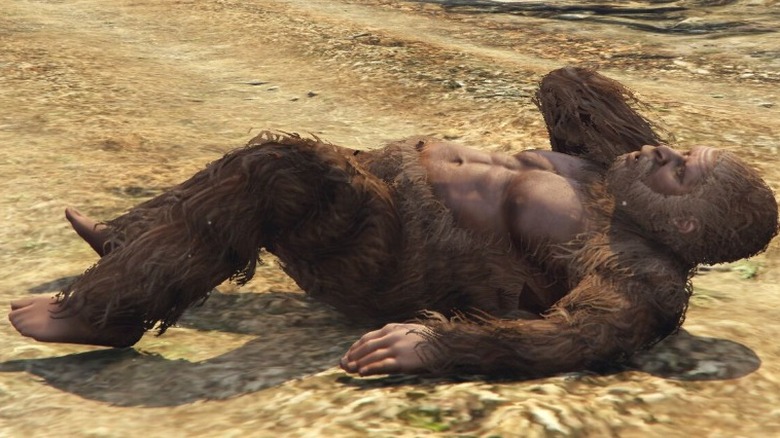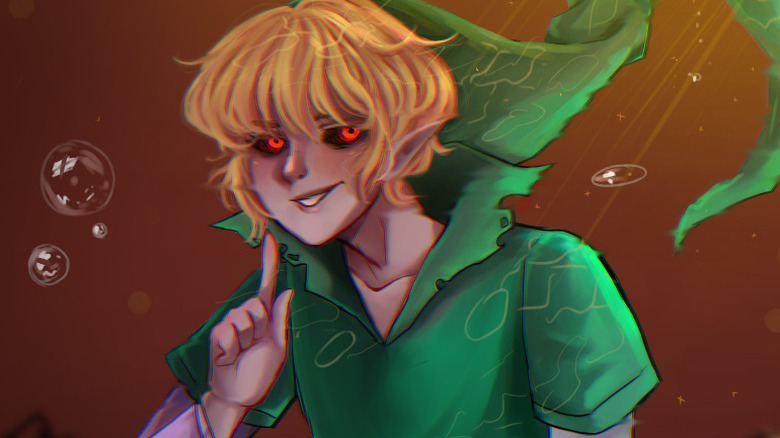Viral Gaming Stories That Turned Out To Be Fake
We've all heard those stories. Back in the day, it might have been whispered about on the playground: "My uncle works for Nintendo, and he said..." or "My older sister's friend told me..." Now, you're more likely to see it on message boards or social media. You know what we're talking about: viral stories and urban legends surrounding our favorite video games.
Below, we're taking a look at some of those viral gaming stories that, as far as we can tell, are not true at all. For the most part, this list tries to stay away the numerous "creepypasta" style stories available on the web. A few may have snuck in, though. They could be standing right behind you. If it turns out somewhere down the line that some of these tales are actually legit, then feel free to send your hats and/or crows. We will gladly eat them.
Polybius -- the CIA video game experiment
The CIA's Project MKUltra is a very real set of experiments involving LSD and mind control, and the bizarre nature of the project is ripe with mysteries and conspiracy theories. So we aren't going to say that Polybius is very definitely fake, as you never know when it comes to the Men in Black. All evidence seems to suggest that the arcade game never existed and, in respect for our health and well-being, we're going to stick to that story.
Here are the basics around Polybius. Supposedly, in the 1980s, several arcades in Portland, Ore. received these mysterious cabinets. Players flocked to them, and reportedly would play for hours on end. Several players reported headaches and hallucinations afterwards, and a few who played Polybius disappeared. Arcade owners said that men in suits would run tests on the game every morning and leave without saying a word. Eventually, the machines were taken away and that was the end of it. The game has been linked to MKUltra, as some believe it subliminally controlled its players.
There are podcasts, a feature film and a small industry in Portland surrounding the mythology of Polybius. Take care if you start poking the hornet's nest around this one!
The existence of Herobrine
We said that we wouldn't venture too far into creepypasta territory, but Minecraft's Herobrine deserves a special shoutout. Maybe it's because Minecraft is such a huge, mainstream game. Maybe Minecraft has an audience that's more into these types of viral stories. Maybe it's because a game as big as Minecraft seems like it must hold some secrets like this. Regardless, the legend of Herobrine seems to never quite disappear.
Here are the basics to this Minecraft story. Herobrine is a hostile mob that looks like the default Minecraft avatar, but with empty eyes. Several players report that Herobrine will often run away if approached, hiding just outside the player's vision. Herobrine can supposedly manipulate the player's world, indicating that this mob is actually a player. However, no name appears above his head and he doesn't communicate.
There is an active community trying to prove Herobrine's existence. Some argue that he's a ghost, some that he's an angry developer, or that he's just a rare spawn created to mess with people. There's no proof that Herobrine actually exists, however, but keep your eyes peeled.
Video games make kids violent
One of the most common mainstream myths about video games is that they cause violence. Video games have often been a boogeyman of sorts, taking the place of different types of music over the decades as the source of why "young people" are the way they are. Several lawmakers have blamed video games, such as Doom and Mortal Kombat, for senseless acts of violence in the world (things like school shootings) but the evidence just isn't there.
There are several, reputable studies out there that show video games (violent or not) do not cause any uptick in violent behavior. This piece from WAMU compiles several different studies that show no correlation between games and real-world violence. If anything, these studies seem to indicate the opposite. It also found that most of the people perpetuating these myths have little to no experience with video games.
If you want to read more about it, here's a PBS piece that compiles plenty of research, as well. There is tons of data out there that disproves this theory.
Tomb Raider's nude code
One of the classic playground stories has to do with Tomb Raider's Lara Croft. There were always whispers that a certain code or elaborate series of events could lead to Lara suffering a serious wardrobe malfunction, causing her to end up completely nude. Sometimes, it involved a series of controller commands. Other times, it was pulling off multiple, near-impossible feats in a single run. However it was completed, you'd be staring at a pair of pointy, pixelated breasts when you were done with it.
By now, with the methods data miners have at their disposal, any bits of code hidden in Tomb Raider that led to a nude Lara Croft would have been long uncovered. When the game eventually released on PC, there were mods that would achieve the desired effect. However, anything that made it happen in the original release was just some clever photo editing. Sorry, video game thirsters — if you want to see Lara Croft in the buff, you're out of luck.
The secret Street Fighter 2 character
The mystery of Ryu and Ken's Street Fighter master has a great video game legend to it. It's got a mistranslation, an epic prank by a major news outlet, and a supposed concession of sorts from the developer. It's great.
In Street Fighter 2, after one character beats down another, they say something to taunt their fallen foe. After Ryu wins a bout, he says "You must defeat Sheng Long to stand a chance!" Many fans thought he was referring to an actual character -– perhaps his master. It was actually just a mistranslation, as Ryu was referring to one of his signature moves. But fans started searching for the mysterious "Sheng Long" anyway.
Then Electronic Gaming Monthly got in on it. In its April 1992 issue, the magazine published how to unlock Sheng Long. You had to play as Ryu, reach M. Bison without being hit, then last ten rounds with him before Sheng Long jumps in and battles you to the death.
It was an April Fool's joke. However, both Akuma and Gouken are said to be based on this classic mistranslation and prank.
The Madden curse
The so-called Madden curse is one of the most lingering legends in all of video games. Supposedly, players that are featured on the cover of the series will have terrible seasons the following year. The Madden series first started featuring players on the cover instead of John Madden in the year 2000, when Eddie George became the first cover athlete (unless you count Garrison Hearst in the European version). George went on to have a great season following his appearance (though his 2001 season was one to forget about).
Plenty of other players have beaten the curse. Odell Beckham, Jr. had an amazing season following his appearance on the cover, and John Madden himself said Calvin Johnson ended the curse in 2013. Kansas City Chiefs quarterback Patrick Mahomes was the Madden NFL 20 cover athlete, and he went on to win the Super Bowl that season.
Plenty of players have had bad seasons after appearing on Madden's cover, sure. That's also kind of the nature of football, where age, injuries and dumb luck can cause havoc with even the best players.
Killswitch -- the disappearing game
Creepy, lo-fi aesthetic? Check. Allegory to Soviet-Russian tyranny? Check. A game that deletes itself upon completion? Oh yes. So goes the story of Killswitch, a game that few people have played and few people can prove exists. Why is that? Because nearly every copy has self-terminated.
The story of Killswitch says that only 5,000 copies of it were ever made. It's a platform puzzle game where players are stuck inside of an underground mine where something terrible has happened. It's up to you to figure out what and guide your character, Porto, to the surface. You'll collect bits of recordings to help you solve the mystery, and use cyphers to translate elaborate codes. When you reach the surface, the screen is filled with light and then... the game is gone. Deleted from your hard drive.
At some point, it seems that people would have figured out how to either duplicate the game or to just stop it from deleting itself. And according to the legend, there are still a few copies of Killswitch out there. Since no one seems to have a copy of it themselves, though, this story looks pretty unlikely.
Lavender Town drives people to suicide
The Pokemon franchise has had some bizarre legends and theories attached to it over the years. Some of them are absolutely true (for example, an episode of the anime was definitely banned after it gave viewers seizures) and others are demonstrably false (you can't find Mew under a truck in the original games). One legend that always bubbles to the surface, however, is the one surrounding Lavender Town.
In the original games, Lavender Town is already creepy. This is where dead Pokemon are sent to be buried. There's no gym in Lavender Town, and an angry Pokemon spirit haunts the area. It's pretty creepy for a kids' game!
The real crux of the story is the music, though.
The story about Lavender Town is that there is something hidden in the music that affects the player. Whether it's programmed in or accidental, the song supposedly triggers something in certain players' brains that drives them to self-harm. The myth has a lot of holes in it, but it makes for a creepy little campfire story. At this point, it's probably more susceptibility that makes the song sound so creepy.
Diablo's hidden cow level
Here's a nice lighthearted one for you. Shortly after the original Diablo released, rumors began circulating that there was a bizarre, hidden level full of all-powerful killer cows. There were various ways to enter this secret cow level, but most of them involved clicking on the cows wandering about town a certain number of times or in a certain pattern.
The rumor fit with Blizzard's off-the-wall sense of humor. In a game as dark and bleak as Diablo, a hidden level full of murderous cows would be a nice little respite. There was no cow level, however. Not yet.
Blizzard started addressing the rumor in various other games, like a quest in the expansion, Hellfire. This expansion referenced the rumor, as well as a cheat code in StarCraft ("There is no cow level"). Then Diablo 2 came along.
After beating the game and restarting, players could combine two items to open a special portal. It warped them to a bizarre world full of bipedal cows carrying weapons. Unprepared heroes were quickly slaughtered, although there was valuable loot to obtain. The cow level may have started as an urban legend, but fans eventually willed it to life. Well played.
Mew hides under a truck in Pokémon Red and Green
Back in the days of the first generation of "Pokémon" games, "Red" and "Green" ("Red" and "Blue" in the States), there was a rumor that players could catch the elusive Mew with a bit of tricky gameplay.
This rumor was somewhat based in truth — in an "Iwata Asks" interview, GameFreak's Shigeki Morimoto admitted to adding Mew to the game as a sort of prank. Near the end of development, the team removed a debug feature from the game's final release. Doing so freed up 300 bytes of data, which the devs used to slot Mew into the game at the last second. However, the elusive Pokémon could not be caught through normal means.
Players can encounter Mew in the wild by exploiting a particularly convoluted glitch. Back before this exploit was common knowledge, however, reports of seeing Mew in the game led to the rumor that it could be found under a truck in Vermillion City. According to this urban legend, players could climb aboard the S.S. Anne and use Surf to reach an otherwise inaccessible pickup truck. Using Strength would push the truck out of the way, revealing the hidden Mew.
This rumor has since been disproven, but the developers of the later remakes, "FireRed" and "LeafGreen," hid a Lava Cookie near the truck, clearly as a cheeky easter egg.
Blowing on game cartridges made them work
To be completely fair, all gamers from the cartridge generation believed this one. Whether you had an NES, a Sega Genesis, or any of the other many cartridge-based gaming systems, there's a good chance that you tried solving your startup and freezing issues by taking your game out of the console and blowing into the gap on the bottom.
The logic on this one was pretty sound, at least in theory. Gamers assumed that dust could collect on the electronics housed inside the plastic, and that a quick burst of air would clear out any pesky bunnies and get those games in working shape again. As noted by fans on Reddit, gamers would often see results after a try or two, but it's been proven in recent years that the belief in this practice was basically just a placebo effect. According to a report from GeekWire, there was no real connection between blowing into the cartridge and the game actually working again.
In fact, it's possible that the moisture in users' breath may actually have caused more harm than good. Kotaku has pointed out that many Nintendo cartridges actually had a warning on the back instructing players not to blow on the pin connectors, but the warning was generally ignored by frustrated kids eager to reset their game.
You can save Aerith in Final Fantasy 7
Aerith's death in "Final Fantasy 7" is one of the most tragic moments in video gaming, so it's no surprise that players are desperate for a way to save her. This desperation sparked a lot of rumors among fans that ranged from ways of preventing Aerith's death outright to simply reviving her after the fact, and players often went to ridiculous lengths to keep her alive.
Some believed that they could avoid Aerith's death entirely by max leveling their characters, which would allow Cloud to confront Sephiroth without putting Aerith in harm's way. Others thought that being nice to Aerith in every interaction and being mean to Tifa would result in Tifa sacrificing herself to Sephiroth in Aerith's place. Others still tried to go the fantastical resurrection route, revisiting Aerith's burial site with a variety of different items (depending on the rumor) in an attempt to bring her back.
Despite their many and varying efforts, players soon found there was no way around this particular story beat. Aerith dies and stays dead, no matter what you do in the game. As such, her death is a devastating inevitability that haunts the story in every playthrough.
Bigfoot can be found in GTA: San Andreas
The "Grand Theft Auto" series has featured a lot of fun, off-the-wall easter eggs over the years — and some of those myths have even turned out to be true. One of the strangest legends to crop up in the series' lifespan has been the existence of Bigfoot in "Grand Theft Auto: San Andreas."
San Andreas is a fictional amalgamation of California and Nevada. Within this state is a sparsely populated and heavily forested area known as the Back O' Beyond. Since so little of this area is explored through in-game quests, a lot of myths about the area have naturally sprung up in the fandom.
One such myth is the existence of Bigfoot, who many players believed made his way into the game. Players reported spotting him walking around in the Back O' Beyond, and though Rockstar has repeatedly denied including him in the vanilla game, modders have added him in to keep the fun alive.
Bigfoot easter eggs were eventually added for real in "GTA 5," letting players to catch sight of thermal images and interact with people in Sasquatch suits. The game even went so far as to give players peyote-induced hallucinations of becoming Sasquatch, allowing them to play as the elusive cryptid.
Someone found a haunted copy of Majora's Mask
"Ben Drowned" is a viral horror story that eventually became an alternate-reality game. According to the story, Alex Hall picked up a worn-down copy of "Majora's Mask" and noticed some pretty freaky glitches when he tried to play.
The glitches ranged from pretty innocuous details, like NPCs calling him "Ben" (the name on the game's existing save file) instead of "Link," to more sinister changes, like the Song of Healing playing backward in a completely empty version of Clock Town. Eventually, the game itself seemed to be communicating with Alex, and all of the messages pointed to the same thing: the game's previous owner had drowned before completing the game, and he (or something even scarier) was now haunting the cartridge.
The story was pretty obviously fictional, just designed to be a creepy story to entertain readers and promote the ARG. However, the story was given some legitimacy by a series of cleverly-edited videos that purportedly represented actual footage from the haunted game, and people bought into the hype for a while. Despite being debunked, the story adds a chilling touch to a game that was already pretty disturbing.

